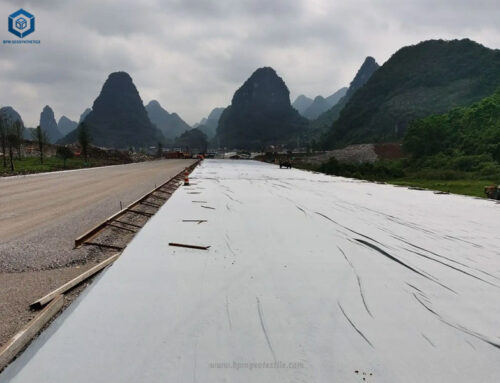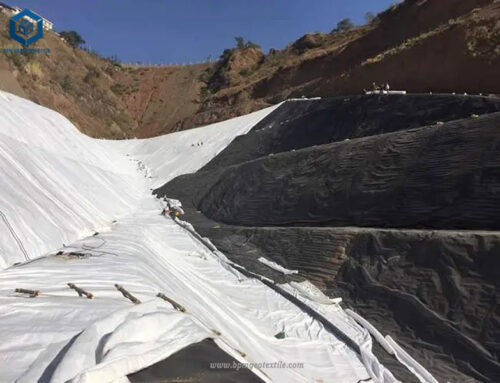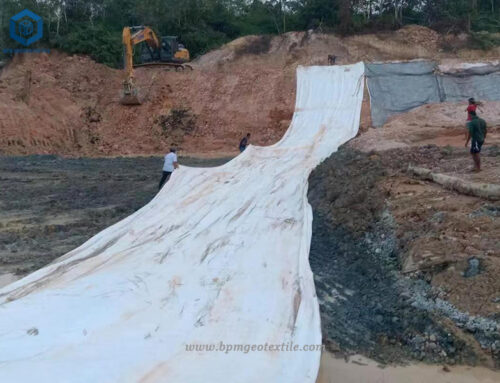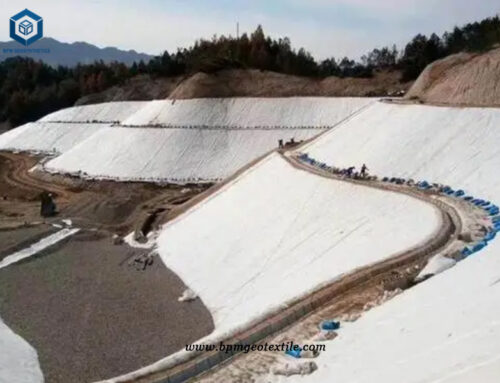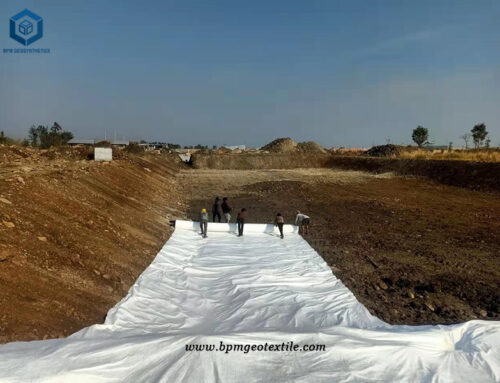Long fiber nonwoven geo fabric for driveways, also known as nonwoven geotextile, is a water-permeable geosynthetic material made of synthetic fibers by needle punching or weaving. The finished product is cloth, generally 4-6 meters wide and 50-100 meters long. The geotextile has Geotextile has excellent filtration, isolation, reinforcement and protection, high tensile strength, good permeability, high temperature resistance, freezing resistance, aging resistance and corrosion resistance. The nonwoven geotextile is the ideal geosynthetic material widely used for driveways and railway construction projects.
Case Study
- Location: Johor, Malaysia
- Product: 125gsm Long Fiber Nonwoven Geotextile
- Application: Driveway Construction
With geotextile fabrics being used so commonly on today’s active jobsites, it is hard to believe that this technology did not even exist just eight decades ago. This technology is commonly used to separate soil layers, and has turned into a multi-billion dollar industry.
While the market for geotextiles did not even exist just 70 years ago, by 2018 in had turned into a $4.1 billion market worldwide. And it continues to grow at a rapid rate. It is projected that this number will grow at a compounding annual growth rate (CAGR) or 12.1 percent through the year 2025.
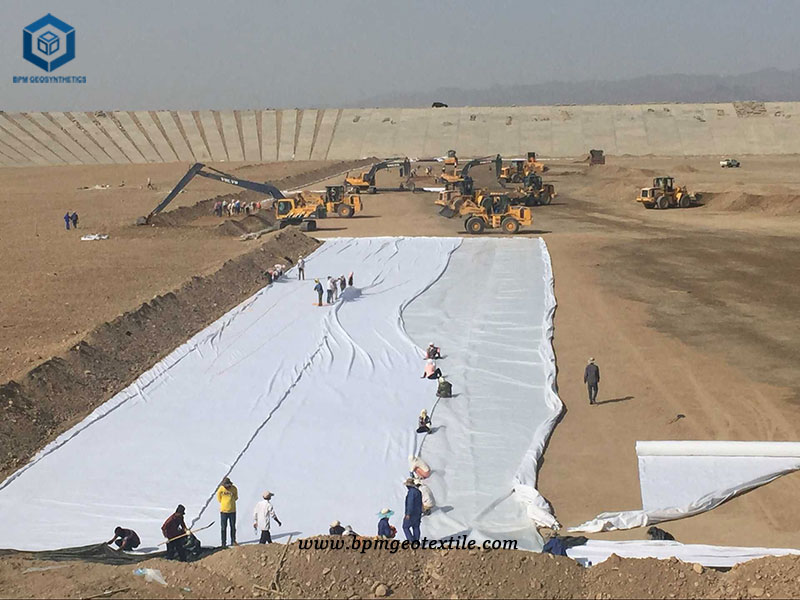
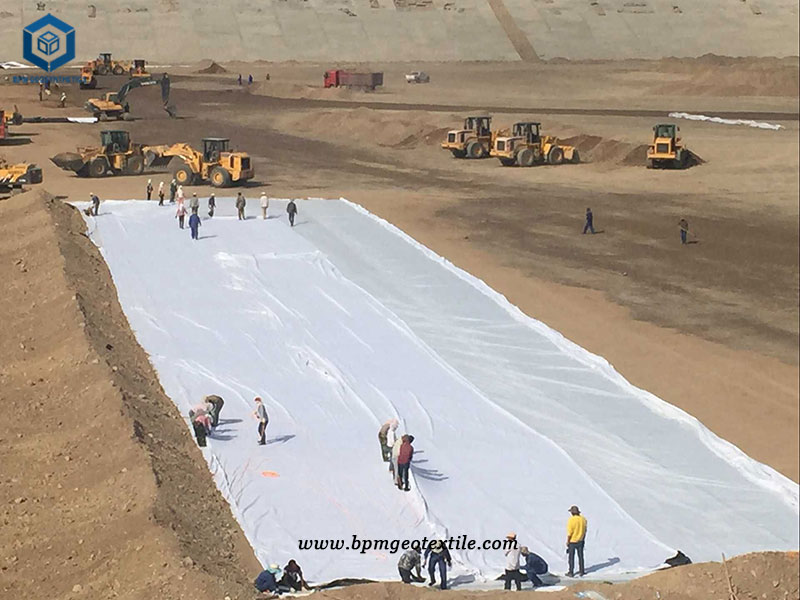
The importance of correct geotextile installation
The geotextile market has rapidly expanded due to its effective products, now widely accepted and used by various parties. Long fiber nonwoven geo fabric, if properly selected and installed, offers significant benefits, particularly in soil separation. Before geotextiles, the construction industry faced challenges with soil layer mixing during site work. Properly installed geotextile fabrics eliminate this issue. Choosing the right geotextile is crucial; woven and non-woven are the most common types. Woven geotextiles are made of strong, low-permeability materials, while non-woven types combine strength with high permeability for separation and filtration. Other important product groups include woven monofilament and spun bound geotextiles, offering different combinations of strength and permeability.
Solution
The customer searched our company from the website and saw that BPM had done many projects on the website. He asked us whether we had done the dam project. In this project, how thick the non woven geotextile is generally used. He also asked how to construct and whether welding services can be provided. Based on our many years of experience, we recommended 125gsm non woven geo fabric for driveways with American Standard standards to our customers, and the pictures of dam projects were sent we have done before to customers for reference, and provide customers with videos on how to weld and how to use welding machines. The customer inquired about the service life of the two thicknesses according to the two thicknesses we recommended. In our communication, customers can feel that we have enough experience, so they trust us very much.
Advantages
Geotextile fabric is usually made from polypropylene or polyester fibers and processed using woven, needle-punched, or heat-bonded methods. Short fiber needle-punched geotextile fabric is created from 100% virgin staple polypropylene fibers that are interlocked by the needle-punching process. This type of non-woven geotextile is strong, durable, permeable, and resistant to deformation. BPM’s short fiber non-woven geotextile fabric is commonly used to enhance ground support and soil stabilization. It boasts high tensile strength, high elongation, excellent UV stabilization, superior filtration, and good abrasion resistance. It’s widely used in civil environmental engineering and construction projects for filtration, separation, protection, and drainage.
Features
- It has good air permeability and water permeability, allowing water to pass through, thereby effectively intercepting sand and soil loss.
- Effectively diffuse, transfer or decompose concentrated stress to prevent soil from being damaged by external forces.
- Prevent mixing between the upper and lower layers of sand, gravel, soil and concrete.
- The mesh is not easy to be blocked, and the mesh structure formed by the unshaped fibrous tissue has strain and mobility.
- High water permeability, it can still maintain good water permeability under the pressure of soil and water.
- Corrosion resistance, using polypropylene or polyester and other chemical fibers as raw materials, acid and alkali resistance, no corrosion, no insects, and anti-oxidation.
- Simple construction, light weight and easy to use.
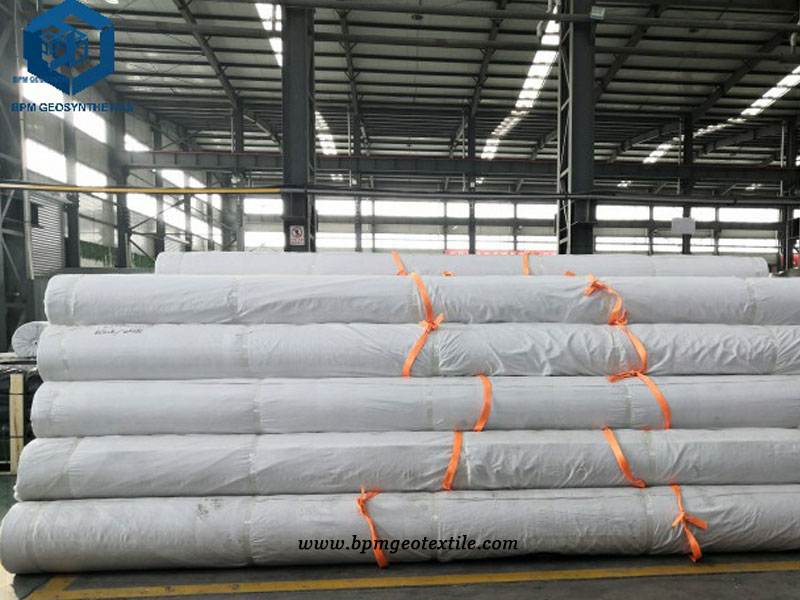
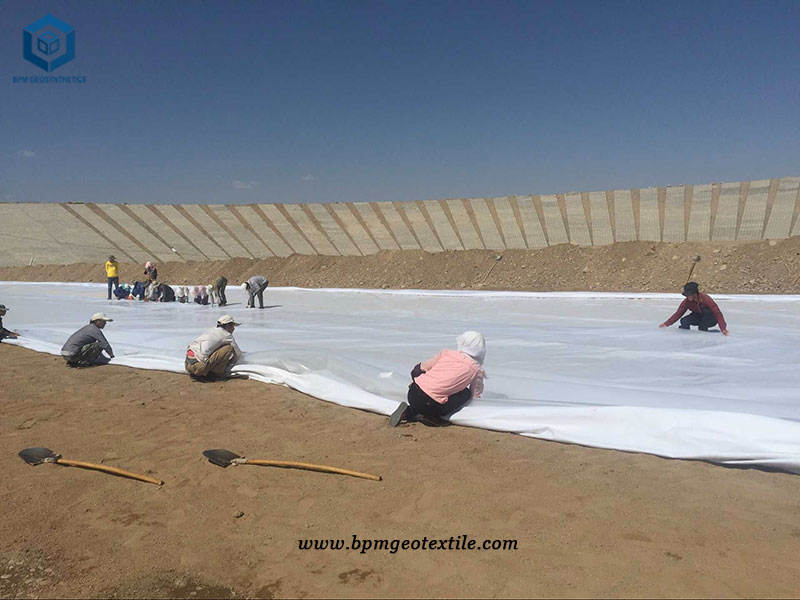
Long Fiber Nonwoven Geo Fabric for Driveways Construction
How many times have you seen road construction? Houses being built? How about those huge rolls of black fabric on the land beside highways and interstates? Long Fiber Nonwoven geo fabric for driveways is an integral part of construction whether on the road or in a building or in your home. Nonwoven geotextiles offer many advantages in the geotextile construction market. Nonwoven geotextile fabric is used in roadway construction. Geotextiles have multiple advantages when used in roadway projects. They can extend the life of the paved road by helping to reduce the number of potholes. Using the geo fabric for driveways has the potential to significantly reduce the number of times roads need to be repaired.
Nonwoven geotextile fabrics are also used for erosion control. Road crews use it for the land beside highways and interstates to help prevent erosion from the rain, snow and wind.
Examples of Nonwovens in Geotextiles and Construction Materials
- Artificial turf
- Capillary mats
- Covers & seed strips
- Geotextiles, drainage & erosion control
- Greenhouse shading
- Insulation
- Modified bitumen roofing
- Pavement overlays
- Roadway reinforcements
- Roofing components
- Soil stabilizers
Why Choose Us
Polyester fiber resists acids and weak alkalis, but not strong alkalis. Polypropylene fiber is chemically stable with good acid and alkali resistance. Polyester has better sunlight resistance than polypropylene, which needs UV treatment for long-term exposure. Geotextiles are usually not exposed to the sun, so high UV resistance isn’t crucial. Polypropylene fiber works well in various geological conditions. Polyester resists acids but not alkalis and can decompose in weak alkalis, making it unsuitable for alkaline environments. Landfill leachate contains strong acids and alkalis, so PP staple fiber non-woven fabrics are commonly used in foreign landfill projects.
Malaysian customers previously bought locally due to high prices but chose us after visiting and opting for a CIF price. They purchased 200,000 square meters of 125g PET filament geotextiles for roadbed repair.
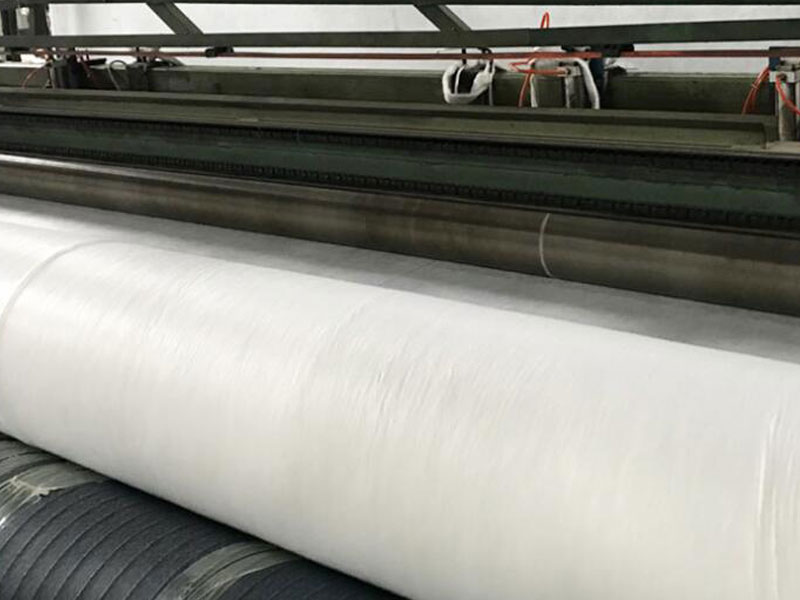
Geotextile Installation
- STEP 1: Prepare the install area. Standard preparation involves a process of removing stumps, stones or sharp objects that may be able to penetrate the area. For roadways, vegetation, roots, weeds and topsoil may also need to be removed.
- STEP 2: Smooth and level the location. If there is especially soft soil in the area, soil may need to be removed and/or replaced with a higher grade material.
- STEP 3: Place the geotextile fabric in the installation area. Fabric should be laid out according to specific plans or site recommendations. Fabric should be stretched until it is as flat and as tight as possible. Each fabric should be overlapped according to site instructions. If no instructions exist, a minimum of 12’’ to 18’’ is recommended.
- STEP 4: Secure the fabric with staples, pins, soil or other heavy materials.
About BPM
BPM manufactures and wholesales many types of effective and states of the art geotextile, geomembrane, and other geosynthetics to over 100 countries. BPM is not only manufacturing best quality geosynthetic products but also providing professional design and installation service. OEM, ODM, custom development and fabrication are also available. If you have any questions or inquiries, please fill and submit the following form, we will reply as soon as possible.

